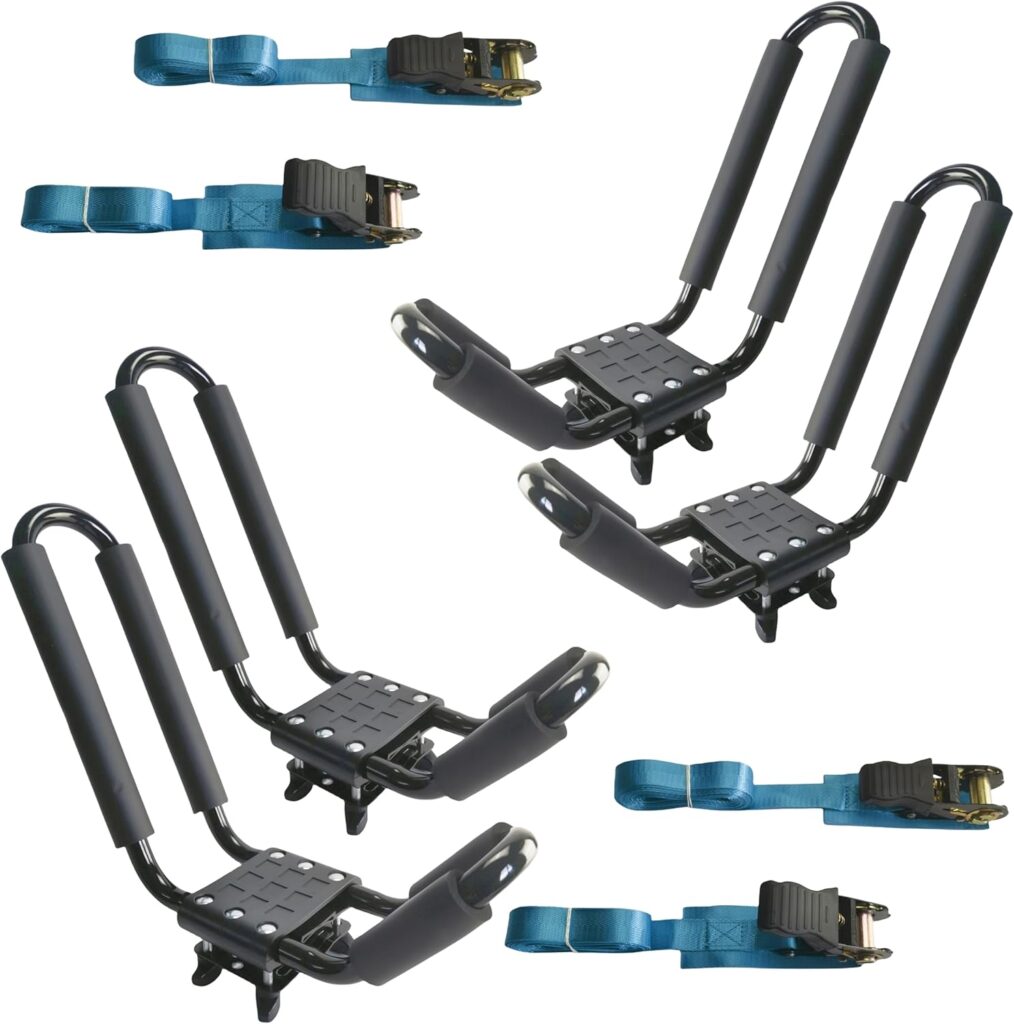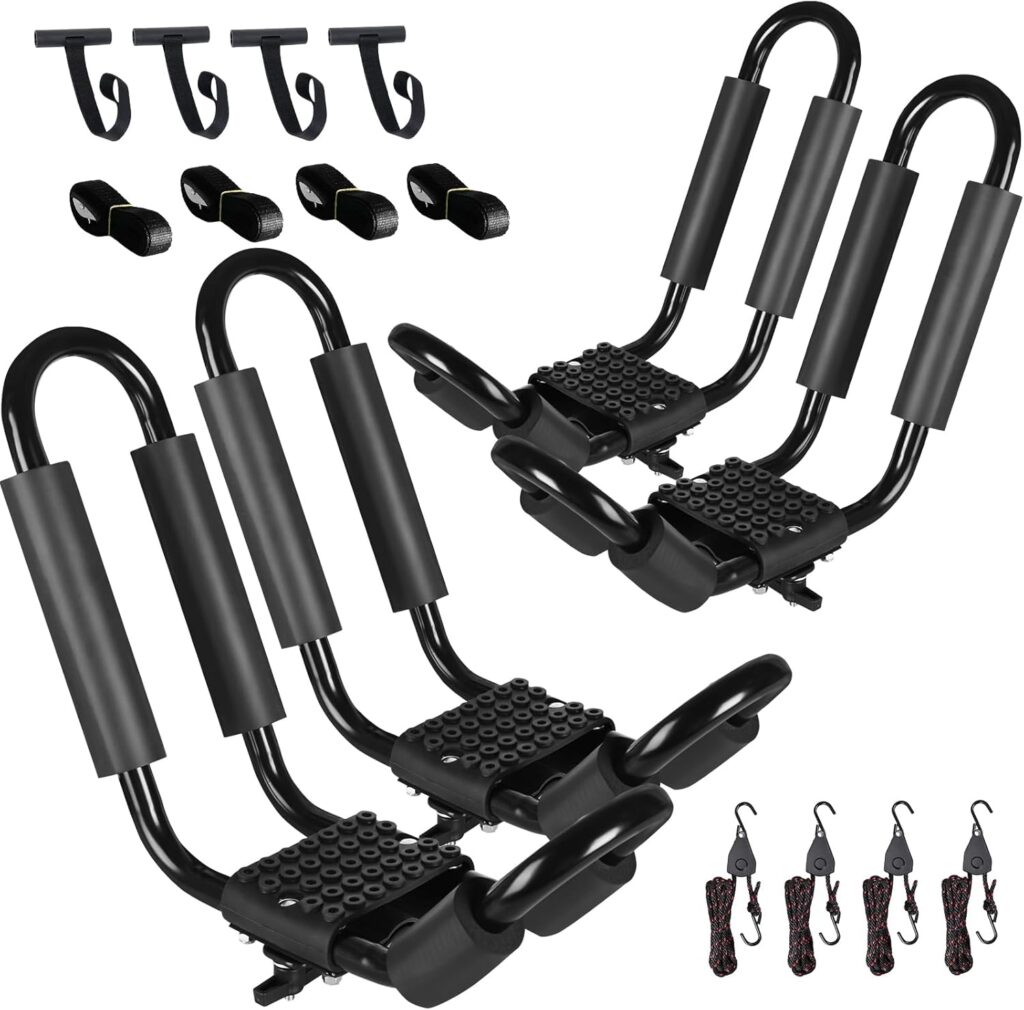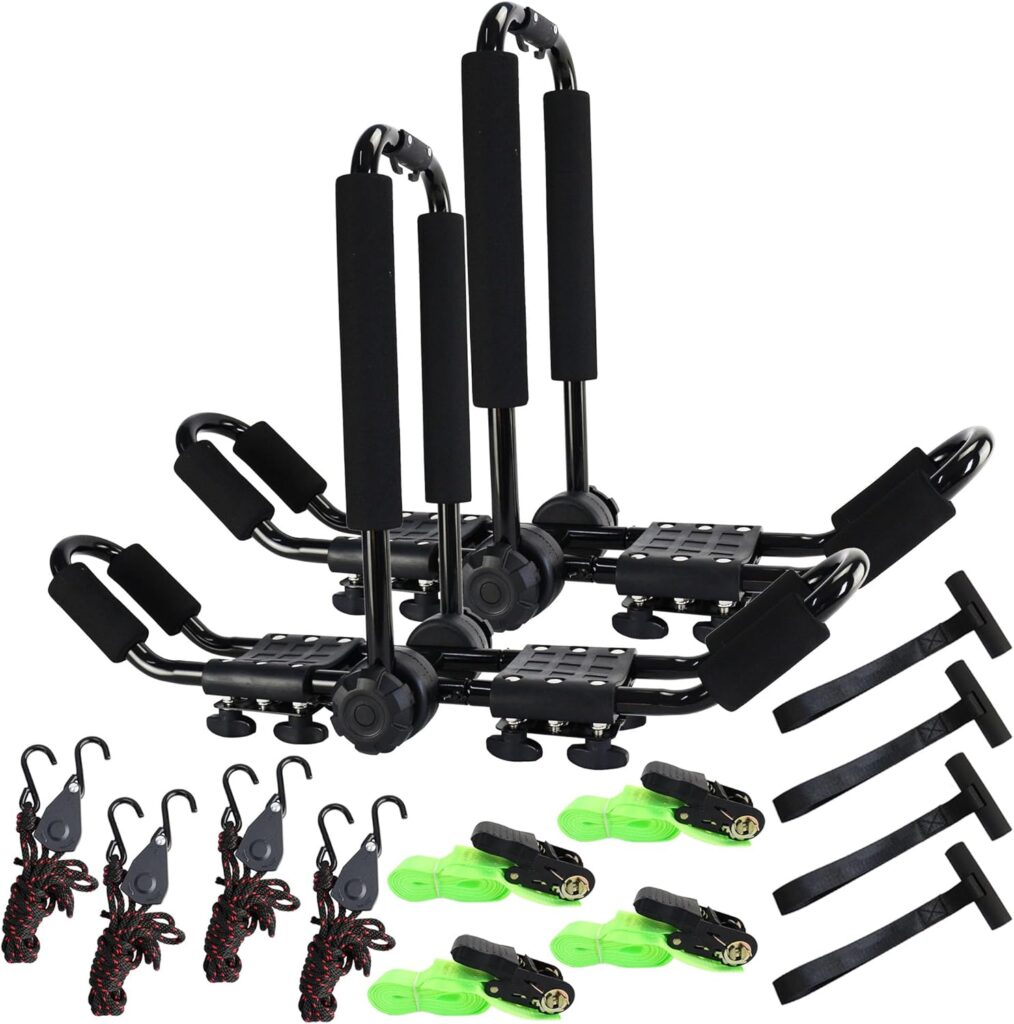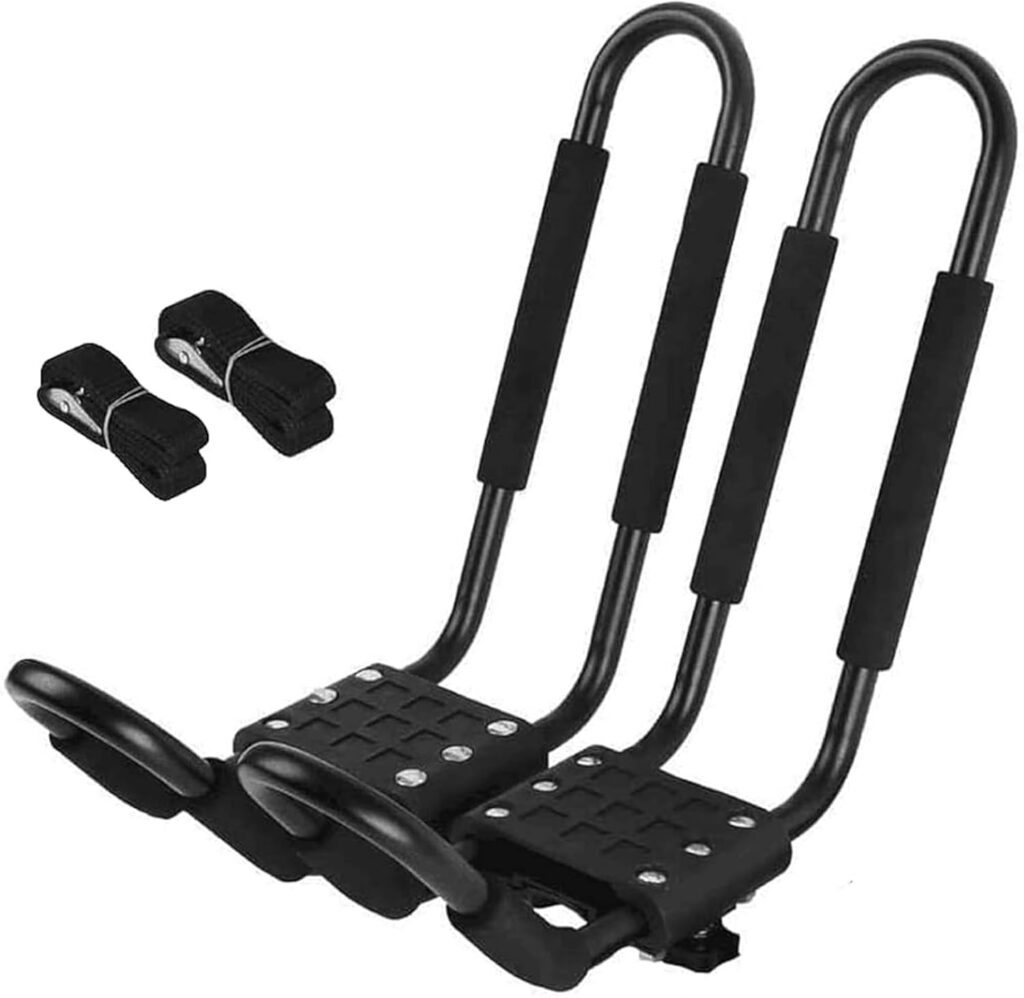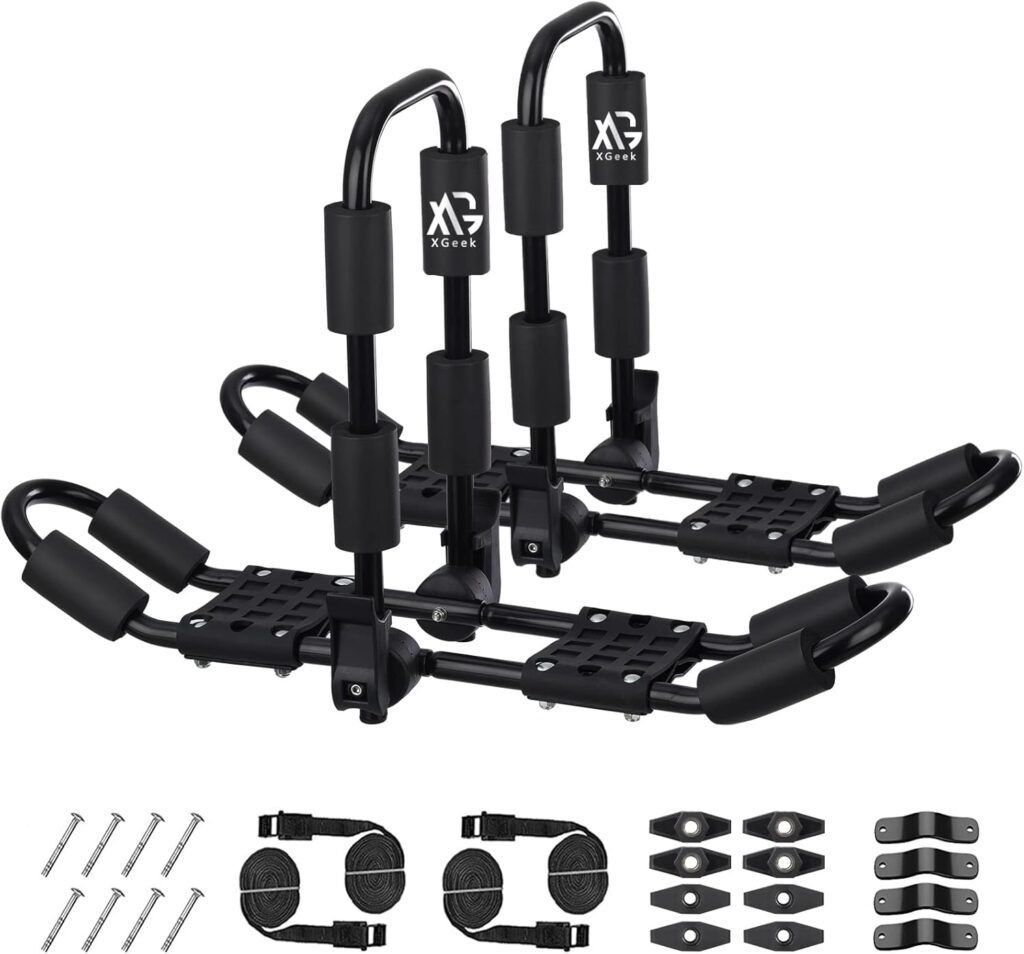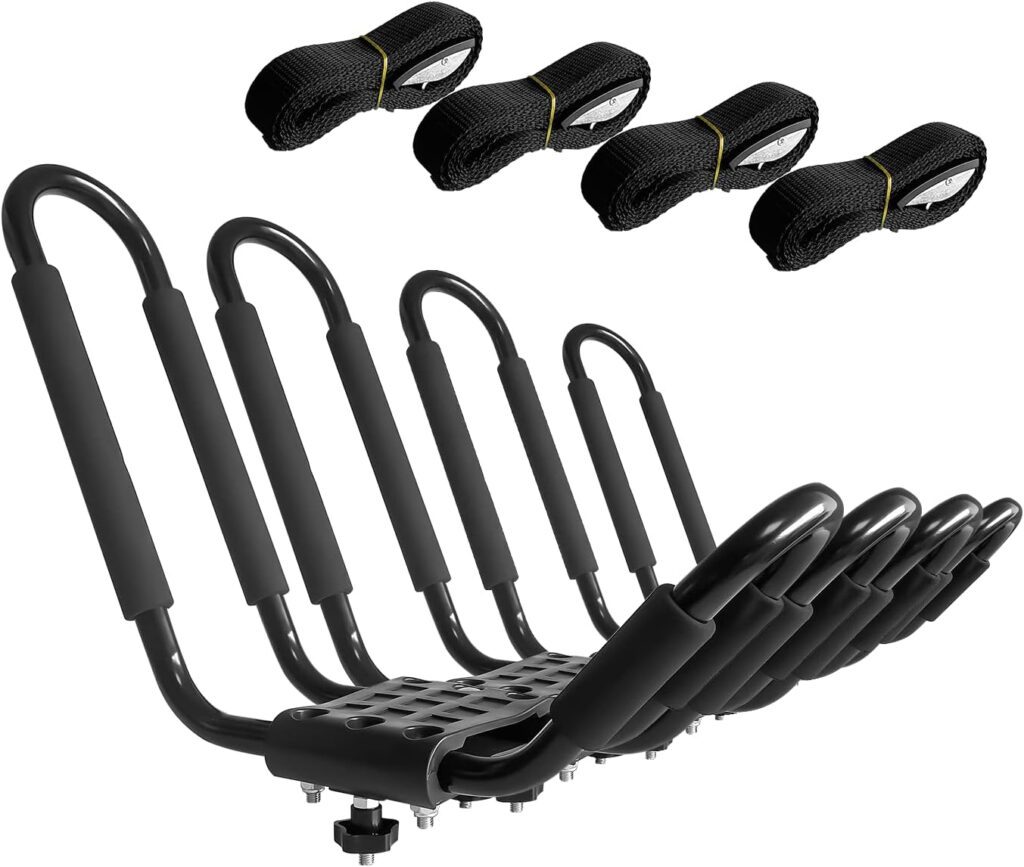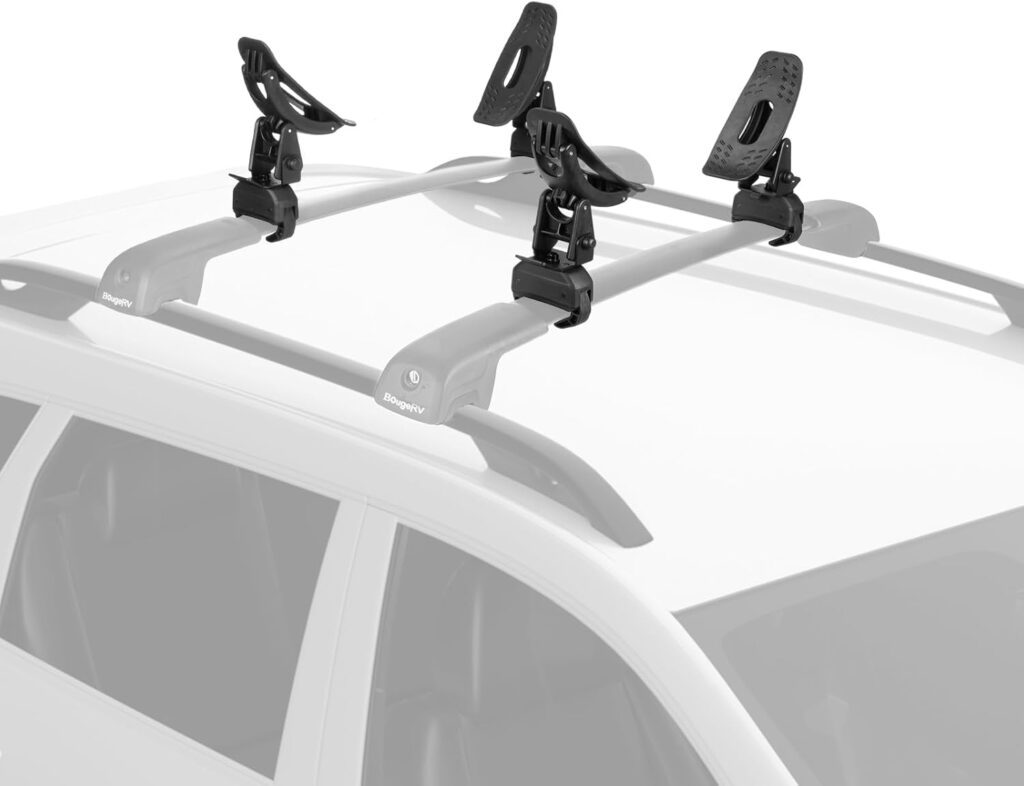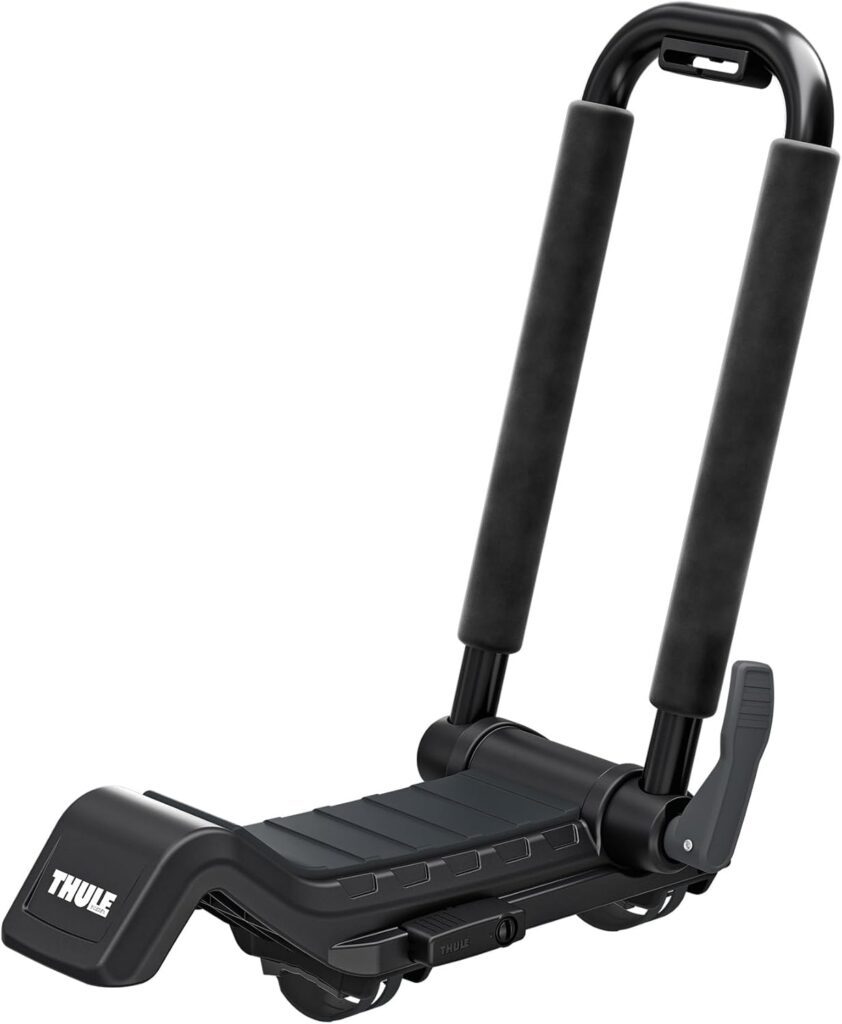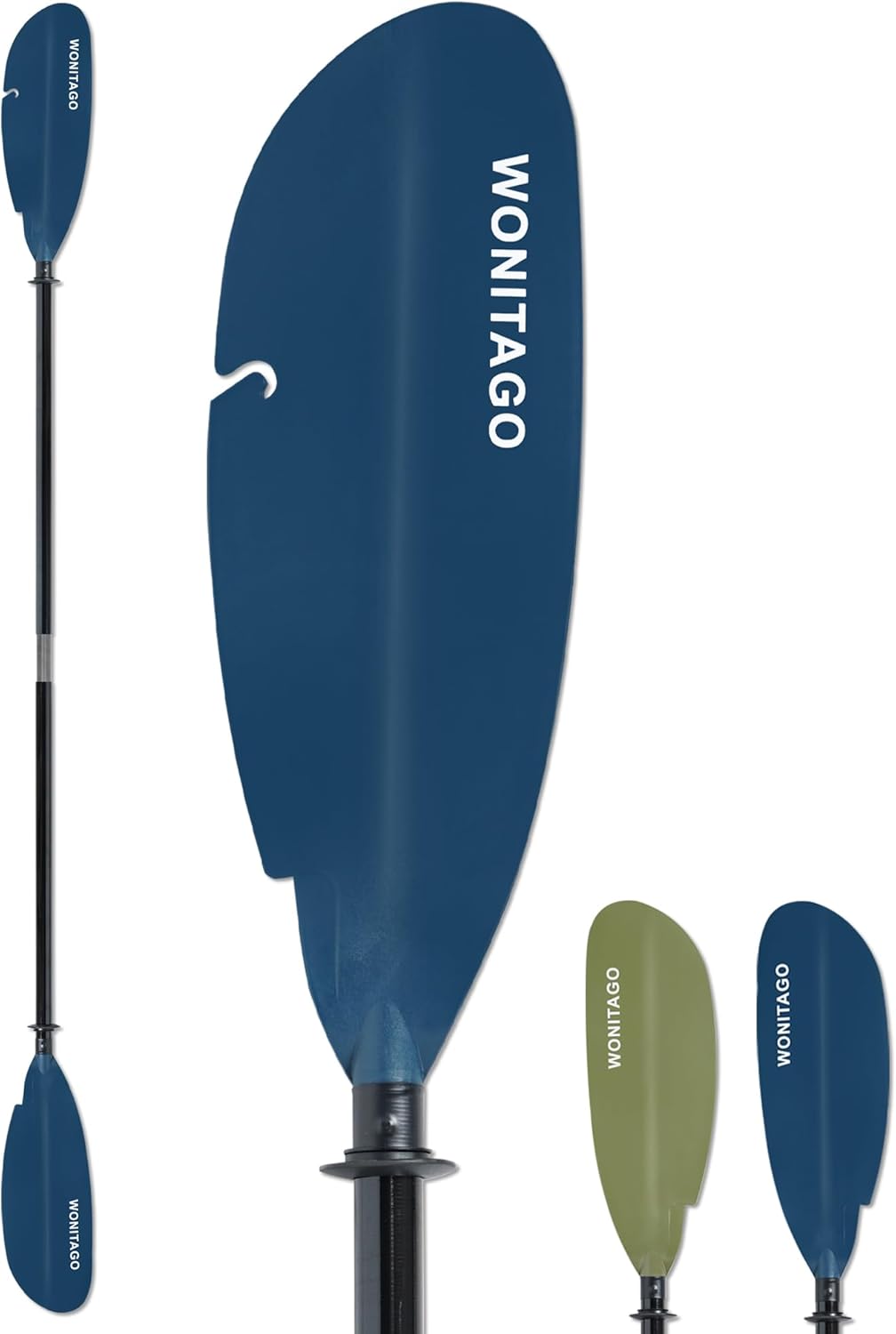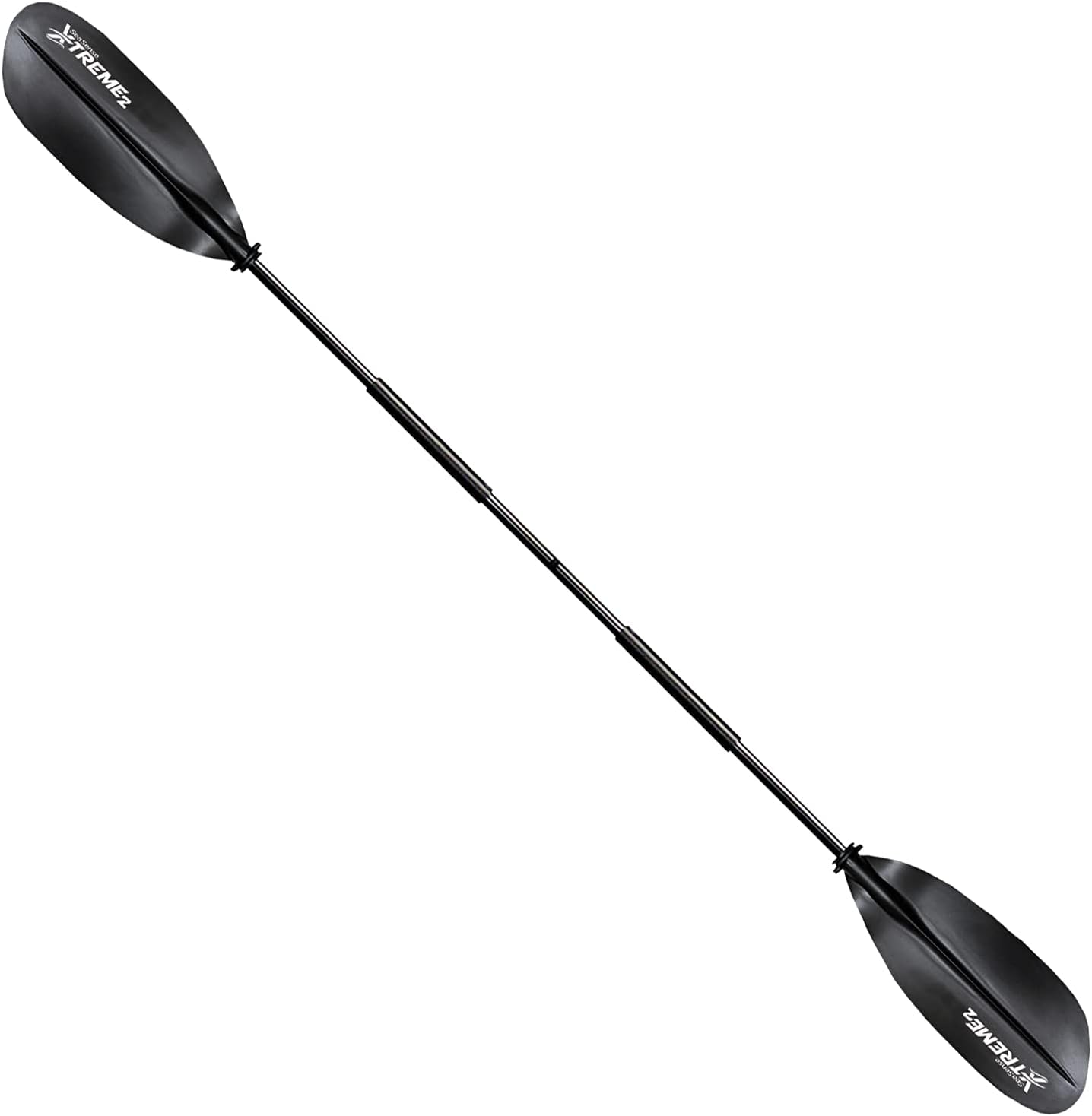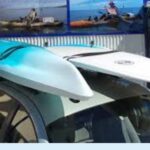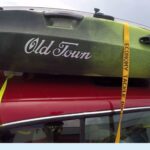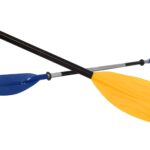10 Best Kayak Roof Racks – the sensible, safe, and slightly smug way to move your boat
Kayak roof racks are the difference between a relaxed morning paddle and a frantic, paint-scarring juggling act at the parking lot.
If your kayak could text you, it would probably send one message before each trip: “Help, I thought we were staying on water today.” Then immediately block you for putting it on the wrong rack.
Below, I give a clear, practical answer to the single question most people ask: best kayak roof racks. Read this opening section and you will know exactly which system to choose for your needs and why. After that, I break down every major concern, the installation steps, safety checks, and the common mistakes to avoid.
Which Are The Best Kayak Roof Racks Right Now
The best kayak roof racks for most people are a saddle-style system from a trusted brand paired with a low-profile crossbar setup.
If you want one quick recommendation, choose a high-quality saddle or stacker from Thule, Yima, FORWODE, or Rockland and match it to either factory crossbars or a strong aftermarket crossbar system. For solo loading, the top pick is a gas-assisted lift carrier such as Thule Hullavator Pro.
10 Best Kayak Roof Racks
When you’re hauling a kayak on the road, the right roof rack is as important as the paddle in the water. The best kayak roof racks give you stability, security, and peace of mind that your boat won’t wobble loose mid-highway.
Below are detailed reviews of popular options, highlighting their strengths and weaknesses so you can match the rack to your vehicle, your kayak, and your travel style.
1. Yima 2 Pairs Kayak Roof Rack
Built with solid steel and wide J-bar design, this rack offers excellent support for single or double kayak setups. The foam padding reduces scratching and keeps boats steady during bumpy rides. A straightforward installation process makes it beginner-friendly.
Pros
- Durable steel construction
- Supports up to two kayaks
- Protective foam padding
- Simple to install
- Fits most crossbars
Cons
- Straps could be stronger
2. PIRIPARA Kayak Roof Rack 2 Pairs J-Bar Carrier Holder
This set is designed for versatility, handling kayaks, canoes, surf skis, and more. Its reinforced frame delivers reliable stability on long trips. The wide compatibility makes it an affordable choice for multi-sport users.
Pros
- Handles different watercraft
- Reinforced steel frame
- Four racks in one package
- Affordable pricing
- Universal crossbar fit
Cons
- Assembly required
- Bulkier design than some rivals
3. FORWODE Heavy Duty Kayak Roof Rack
Engineered with added hardware, including ratchet ties, hooks, and anchor belts, this rack is made for heavy-duty hauling. The rack stays firm under high-speed travel and wind resistance. Installation requires some patience, but the stability is worth it.
Pros
- Comes with complete tie-down kit
- Sturdy and reliable under heavy load
- Handles canoes and surfboards as well
- Extra anchor belts improve safety
- Long-lasting construction
Cons
- Setup can be time-consuming
- Heavier than lighter-duty racks
4. GZDEMYYXGS Folding Kayak Roof Rack Adjustable
This foldable J-bar rack adds convenience when not in use, cutting down on wind drag. The adjustable design lets you carry SUP boards as well as kayaks. Its compact profile makes it ideal for everyday drivers who don’t want a bulky rack overhead.
Pros
- Folding design saves space
- Works for SUPs, canoes, and kayaks
- Easy to adjust for different loads
- Reduces wind resistance
- Lightweight build
Cons
- Not as robust for very heavy boats
- Folding joints may loosen with time
5. Rockland Kayak Roof Rack, 1 Pair J-Bar
This rack combines affordability with solid performance, carrying up to 165 pounds. Thick padding protects hull surfaces from dents or scratches. The rack’s dimensions are compact but practical for most cars and SUVs.
Pros
- High weight capacity for the size
- Soft padding for hull protection
- Fits cars, SUVs, and trucks
- Compact but strong
- Budget-friendly
Cons
- Limited to one kayak at a time
- Ratchet straps could be longer
6. XGeek Kayak Roof Rack 4-in-1
The bilateral folding design makes this rack stand out, allowing you to carry kayaks, surfboards, skis, and canoes in different configurations. The adjustable arms ensure a snug fit for various gear. It’s built for adventurers with multiple water hobbies.
Pros
- Multifunctional (kayak, canoe, surfboard, ski)
- Folding bilateral design
- Adjustable arms for tight fit
- Heavy-duty steel frame
- Versatile for different trips
Cons
- Bulkier than single-purpose racks
- Slightly pricier than basic models
7. HIGHRAZON Kayak Roof Rack, 2 Pair J-Bar
Heavy-duty design with ropes included, this rack ensures security even for longer hauls. The wide-mount J-bars accommodate standard kayaks with ease. A practical pick for paddlers who value straightforward strength.
Pros
- Comes with ropes included
- Two pairs for multiple kayaks
- Strong build quality
- Simple to mount
- Works with SUVs and trucks
Cons
- May require tools for installation
- Ropes less durable than ratchet straps
8. Leader Accessories Kayak Roof Rack
Crafted from stainless steel, these racks resist rust and corrosion. Four tie-down straps keep kayaks firmly in place on highways or rougher roads. Strong and dependable, they’re built for serious paddlers.
Pros
- Stainless steel build resists rust
- Includes four tie-down straps
- High durability for long-term use
- Fits cars, SUVs, and trucks
- Supports multiple kayaks
Cons
- Slightly heavier than aluminum racks
- Premium price compared to basic models
9. BougeRV Kayak Roof Rack Saddles, Crab Roof Mounting Kit
This saddle-style rack is designed for those who prefer a low-profile system over J-bars. It distributes weight evenly across four padded mounts, reducing pressure points on your kayak. Compatibility with paddle boards makes it versatile.
Pros
- Low-profile saddle design
- Even weight distribution
- Padded mounts protect hulls
- Works for kayaks and paddle boards
- 150 lbs capacity
Cons
- Requires more tie-down effort
- Limited height adjustment
10. Thule Hull-a-Port XTR – Kayak J-Style Roof Rack
Premium and pre-assembled, this rack folds flat when not in use and locks securely to your crossbars. It accommodates up to two kayaks with excellent stability. The universal mounting makes it suitable for most vehicles.
Pros
- Pre-assembled for easy use
- Folds flat when not carrying gear
- Locks to crossbars for security
- Carries up to two kayaks
- Trusted brand reputation
Cons
- Higher price point
- Heavier than simpler designs
How To Choose The Right System For Your Vehicle And Paddling Style
Choosing the best kayak roof racks is less about brand and more about the fit between your vehicle, your kayak, and how you load. Follow this checklist.
1. Know Your Vehicle Roof Type
- Bare roof with no rails: you will need clamp-on crossbars or vacuum mounts. SeaSucker vacuum mounts or a clamp-style crossbar system are common solutions.
- Raised rails or fixed points: many aftermarket carriers clamp or bolt onto these easily. Check your vehicle manual for roof load limits.
- Factory crossbars: measure bar width and profile for pad or saddle compatibility.
2. Check Weight Limits And Crossbar Ratings
Confirm your vehicle roof’s maximum static load and the crossbar dynamic rating. Add the weight of your kayak and gear then leave a margin. Professional sources stress that crossbar capacity is the limiting factor, not the rack padding.
3. Decide How You Will Load The Kayak
If you often paddle alone, pick a lift-assist carrier or a roller system. If you have a partner and need speed, saddles or J-bars work well. For frequent multi-boat trips, choose stackers.
4. Think About Permanence And Aesthetics
Do you want something that stays on the car, or a system you mount only when needed? Foam blocks are cheap and removable. Saddles and J-bars are more permanent. Vacuum mounts are temporary and do not require drilling.
5. Budget Vs. Longevity
Inexpensive racks can work but expect faster wear in straps and buckles. Replacing parts is common. Established brands usually provide spare parts and clearer fit guidance.
Types Of Kayak Roof Carrier Systems, Explained
Understanding the basic types helps you choose the best kayak roof racks for your use.
1. Foam block systems
Low cost, simple, good for occasional paddlers. Straps loop into the car interior or around crossbars. Great as temporary car racks for kayaks but they offer less lateral stability than saddles.
2. Saddle systems
Cradles that conform to hull shapes. These protect the hull and hold boats snugly at straps. They are the common choice for a durable kayak roof carrier solution.
3. J-bar carriers
Ideal for long, narrow kayaks. They hold boats on their side which lets you fit more boats on the roof. Use proper padding to avoid pressure points.
4. Stackers
Vertical posts let you stack kayaks in a V position. Excellent for 2 to 3 kayak setups where roof length is limited. The Yakima JayLow is a classic example of this approach.
5. Lift-assist carriers
Gas-strut or hinge systems lower the carrier to waist height for loading, then lift the kayak into place. The Thule Hullavator series is the category leader for ease of solo loading. These cost more but dramatically reduce lifting strain.
6. Vacuum-mount racks
Suction-cup mounts are useful when you cannot or do not want to install crossbars. SeaSucker Talon and similar systems hold strongly on smooth vehicle surfaces and detach without damage when done correctly. They are not a replacement for properly rated permanent racks on very long trips.

Matching Racks To Your Vehicle: Fit Tips
A poor fit causes most problems. Follow these steps to ensure the best kayak roof racks for your car.
- Measure roof width and crossbar spacing. Make sure the carrier feet can clamp to your bar profile.
- Check your vehicle manual for roof load and do not exceed it. Crossbars often list a maximum dynamic rating which you should not exceed while driving.
- If your vehicle has fixed points or flush rails, use the manufacturer fit guide or a professional installer. Many brands publish explicit fit tools for each car model.
How To Put A Kayak On Roof Rack And How To Load Safely, Step By Step
A big part of choosing best kayak roof racks is knowing how to load the boat safely. Here is a repeatable method that works with saddles, J-bars, and stackers.
- Position the car on level ground close to the launch site.
- Place the carrier padding or saddle at the correct distance from the roof edge and between crossbars.
- Lift and set the kayak into the cradle or onto its side. If using a lift-assist, lower the arms to waist height and roll the boat into place. If using foam blocks add cross straps to prevent sliding while tightening racks.
- Apply the primary over-the-top strap. Run two straps over the cockpit area, routed around the crossbars if possible. Keep straps snug but not over-tight.
- Use an inverted V bow and stern line to the vehicle to stop fore-aft movement and twisting. This is a standard paddling safety method.
- Walk around the car and re-check strap tension after a short drive. Re-check on the roadside after the first few miles.
|
|
|
|
Solo Loading Techniques And Tools
If you paddle alone, prioritize carry systems labeled for single-person use. Lift-assist carriers reduce strain. Rollers and stingers that guide the kayak up to the cradle speed the process. Practice on level ground before you attempt loading at a windy roadside.
Many paddlers report that a lift-assist carrier like the Thule Hullavator lowers the kayak to waist height, making single-person loading reliable and repeatable.
Protecting The Kayak And Your Car
Avoid rubbing and pressure points by using good padding on contact points. Choose softer saddle inserts or pads and check for concentrated pressure at bow and stern tie locations.
If you transport for long distances in sun and heat consider covering the cockpit area to reduce UV exposure to foam and plastic. Use a soft tape under straps to avoid abrasion in high-load areas. These steps reduce cosmetic damage and extend life of both your hull and your car roof.
Carrying Multiple Kayaks
When carrying more than one boat, spacing is everything. Stackers or J-bars let you fit multiple kayaks without them touching hard. Maintain even spacing and place heavier boats lower.
When stacking, check that the top boats do not overhang excessively and that bow and stern tie-downs maintain the inverted V pattern for each boat. If in doubt install two full sets of carriers spaced apart rather than rely on a single set to bear multiple loads.
Noise, Aerodynamics, And Fuel Economy
Any rack adds aerodynamic drag. Low-profile crossbars and smooth saddles reduce wind noise and fuel penalty.
If you want to reduce fuel cost and noise, remove non-essential racks when not in use and drive at moderate speeds. Studies show most drag and noise occur above highway speeds, so for many trips moderate driving reduces both stress and cost.
Maintenance And Replacement Parts
Inspect straps, buckles, and paint-protect padding before every season. Replace frayed straps and corroded hardware immediately.
Most major brands sell replacement parts for buckles, feet, and pads. Keep spares in your vehicle so a broken buckle does not end a trip. Regularly apply a corrosion inhibitor to metal parts if you paddle in salt water.
RELATED: How to transport a kayak without a roof rack
Common Mistakes And How To Avoid Them
1. Mistake: Relying only on cross straps to hold the kayak.
Fix: Use bow and stern tie-downs to create an inverted V for stability.
2. Mistake: Overtightening straps and crushing hull foam.
Fix: Tighten until snug and check after a short drive.
3. Mistake: Assuming factory rails support unlimited weight.
Fix: Check the vehicle manual and crossbar rating.
FAQs on Bet Kayak Roof Racks
- Can I use foam blocks on my car? Yes, they work for occasional trips but offer less lateral stability than saddles.
- Will a kayak on roof rack damage my paint? Not if you use padded contact points and check straps for movement.
- How long can I keep a rack mounted? If the rack is designed to be permanent it can stay mounted, but check wear and corrosion annually.
- Are vacuum mounts safe for long highway trips? Vacuum mounts are strong but you must follow manufacturer limits and check suction periodically. They are excellent for temporary use.
The Bottom Line on Best Kayak Roof Racks
Choosing the best kayak roof racks comes down to matching the carrier type to how you load boats, how often you paddle, and the shape of your vehicle roof. Saddle and stacker systems give the best balance of protection and stability.
Lift-assist systems are the single best quality-of-life upgrade for solo paddlers. Vacuum mounts are a smart choice when you lack rails or do not want permanent equipment. Spend a little time on fit and strap technique and your rack will become the least stressful part of a great day on the water.
